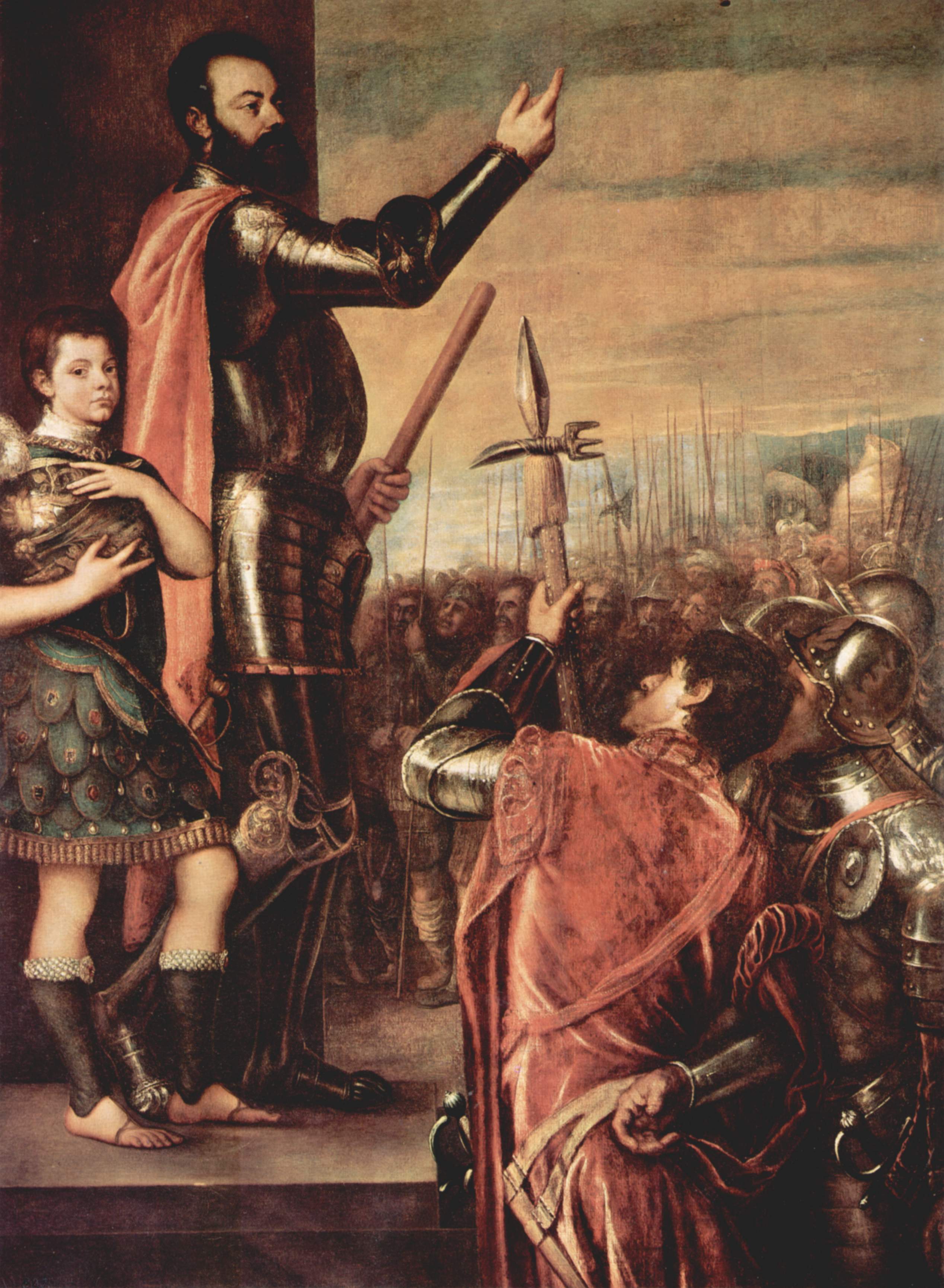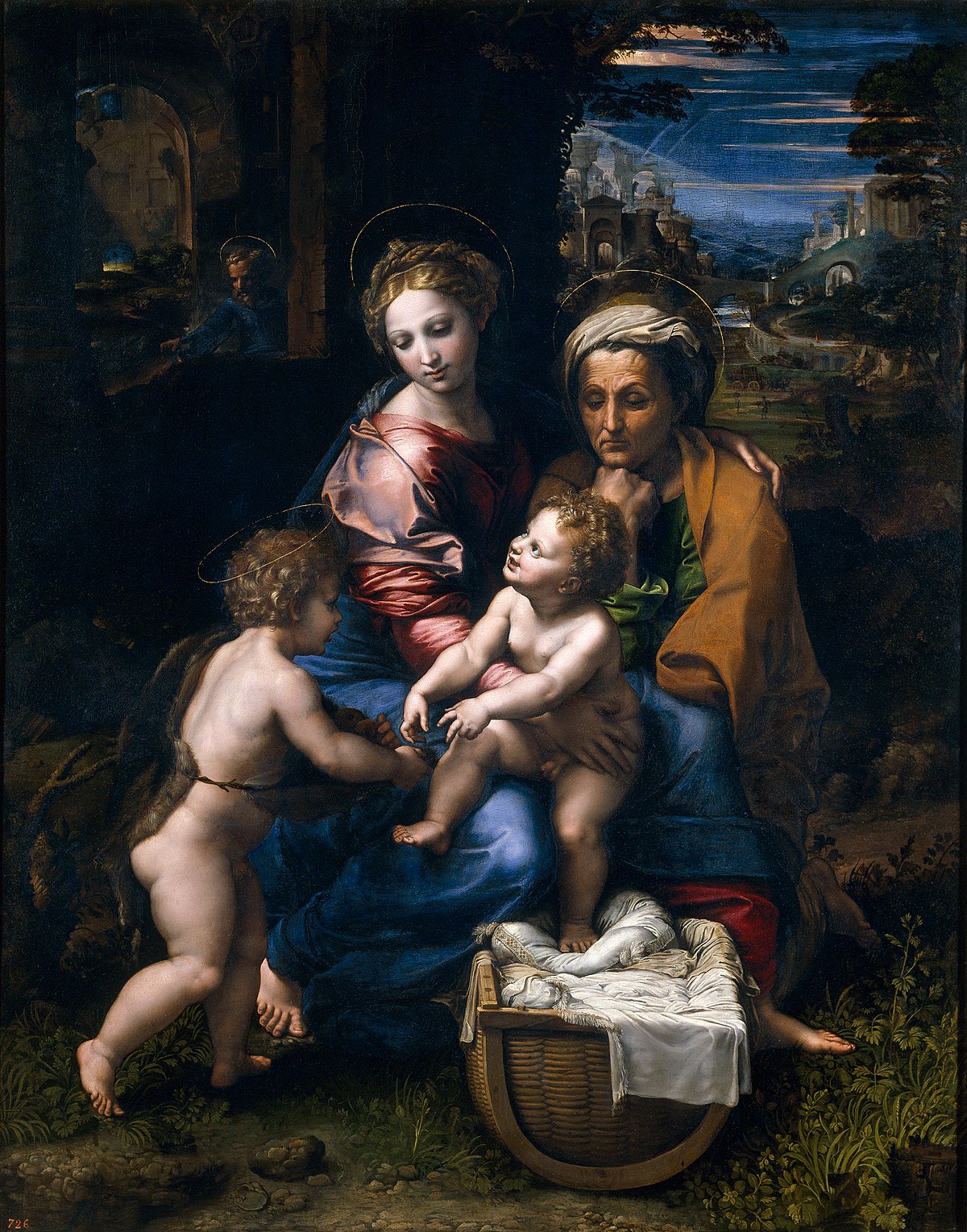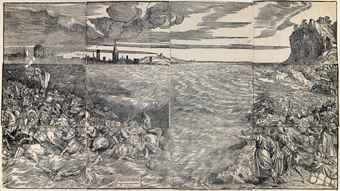Sotheby’s Old Masters Evening Sale on 6 December 2017

Late portraits by Titian
(1485/90(?) - 1576) are very rare and this impressive Portrait of a Venetian
Admiral, possibly Francesco Duodo was executed during the Italian master’s
final decade. Largely ignored in the literature due to its inaccessibility,
this portrait can be traced back to the 1620s when Van Dyck recorded it in his
Italian sketchbook (est. £1 - 1.5 million).

The sale includes a monumental painting by leading Italian Renaissance master Titian and his workshop. One of only two known versions of the subject by the artist, Saint Margaret Sotheby’s New York Evening auction of Master Paintings on 1 February 2018 will offer a monumental and striking painting by Titian and his workshop. One of only Titian, and Workshop two known versions of the subject by the artist, Saint Margaret (estimate $2/3 million) was first recorded in the English royal collection of King Charles I (1600 – 1649), where it was displayed alongside the King's most highly prized works at Whitehall Palace.
The present work is being offered at a particularly poignant time, as the Royal Academy of Art’s upcoming exhibition Charles I: King and Collector (27 January – 15 April 2018) seeks to reunite the King’s treasures that were dispersed following his execution.
During his reign, Charles I competed ferociously with the great powers of Europe to assemble an art collection rivaling to all others. Born into a family with deep ties to art, Charles I had an immense appreciation of art history and traveled across Europe to acquire works by some of the greatest artists, including Leonardo Da Vinci, Raphael and Correggio. It was in the Privy Lodging Rooms at Whitehall Palace – a series of private apartments – where Charles kept his most highly- prized paintings.
According to inventory records and notes from 1639, Saint Margaret is listed as hanging in the First Privy Lodging Room, an apartment so distinguished that no other could rival in splendor, where it was displayed alongside the King's collections of Titians, including the early

Jacopo Pesaro Presented to Saint Peter (Koninklijk Museum voor Schone Kunsten, Antwerp),

Venus with an Organ Player

and Alonso de Avalos addressing his Troops (both Prado, Madrid), and three other remarkable works currently hanging at the Musée du Louvre, Paris.
Soon after the King's execution in 1649, the decision was taken by Parliament to sell off his grand collection. Much of the collection was sold quickly to raise funds for the state, while others were sold to pay off the King’s debt.
Alexander Bell, Worldwide Co -Chairman of Sotheby’s Old Master Paintings Department, commented: (images added)
“The inventories and valuations of Charles I’s collection compiled mainly in 1649 are unique document s that provide fascinating insights into the relative value of the works at this particular moment in time. The inventories record Saint Margaret at £100 – a little less than the more celebrated paintings by Titian, such as Venus with an Organist (Prado, Madrid) at £150 and the Allegory of Alfonso d’Avalos (Louvre, Paris) at £250, but more than the vast majority of works in the 3 enormous and storied collection, including the now-world-famous

Salvator Mundi by Leonardo Da Vinci at £30.
The most renowned pictures in the King’s collection were valued considerably higher:

Raphael’s Madonna della Perla (Prado, Madrid) was recorded at £2,000,

and Correggio’s Jupiter and Antiope (Louvre, Paris) at £1,000.”
As one of two versions of the subject of Saint Margaret signed by Titian – the other being in the Museo del Prado, Madrid – it seems probable that the works were painted alongside one another , with Titian utilizing his workshop to block in areas of the painting and finishing the key areas himself. The expressive power of Titian’s later style is nowhere more clearly demonstrated than in the atmospheric depiction of the city of Venice on fire in the background. On the skyline, the campanile of St Mark glows in fiery orange and pinks, whilst the stormy waves of the sea are animated by dark blue and green brushstrokes. As is characteristic with Titian’s late works, the darker tones, fiery landscape and swift handling of the paint in the present work create a sense of drama that is entirely fitting to the narrative.
Titian depicts the legendary virgin martyr, Saint Margaret, as she emerges unscathed from the body of Satan, who had appeared to her in the form of a dragon and swallowed her whole. The cross she held in her hand irritated the monster’s insides and the dragon burst open allowing her to escape unharmed. Painted in a myriad of colors, her luminous light green tunic with its bright white sleeves and rose pink veil stand out from the earthier, brown based tones of the rest of the canvas. The dragon that occupies the bottom register of the canvas is predominantly painted in brown and blackish hues and the only flashes of color are the strokes of red and white delineating his vicious mouth. Depicted in dramatic contrapposto, the implied movement in Saint Margaret’s twisting body contrasts to the solidarity of the rock behind her , emerging from the picture plane as an impressive figure, trampling the dragon underfoot and holding her crucifix aloft.
Sotheby’s Sale of Important Old Master
Paintings January 29 & 30, 2009
Fourteen
works from Italian businessman Luigi Koelliker's collection will be included in
the January sale, led by Titian's Salome with the Head of John the Baptist(est.
$4/6 million). The painting, which portrays the seductress Salome straining
under the weight of John the Baptist's head, was executed in 1570 at the end of
Titian's life and embodies the artist's late style. The canvas is characterized
by dynamic contrasts between light and dark as well as the juxtaposition of the
carefully executed jewels that circle Salome's neck and the expressive
brushstrokes of her garments.
First recorded in the 1649 Hampton Court
Inventory of the late King Charles I of England, the painting was intended
for the Commonwealth sale following the English Civil War, but was removed from
sale, and ultimately returned to the British Royal Collection after the
Restoration of Charles II. It descended in the Royal Collection until after
1736, at which point it entered a private Scottish collection.
Although its
importance was unknown at the time, the work first reappeared at auction in
1994 in London, where it was acquired by the London dealer Colnaghi, from whom
it was purchased by Mr. Koelliker. Subsequent research reestablished its status
as an autograph work by Titian and restoration uncovered the mark of King
Charles I, proving its royal provenance.
A lost masterpiece by Venetian artist Titian which was once owned by King Charles I and worth millions was mistakenly sold at auction for just £8,000, it emerged yesterday.
The £4million 16th century painting - Salome with the Head of St John the Baptist - was originally unearthed during a house clearance in 1993.
Its unsuspecting owners took it to auction house Christie's in London where they were told that it was probably 'from the school of Titian', but not by the hand of the master himself.
Assured that cleaning the painting would be an unnecessary expense David Seton Pollok-Morris Dickson, 60, and his sister Susan Marjorie Glencorse Priestley, 62, agreed to a valuation.
When it went under the hammer 12 months later in December 1994 they watched as lot 348 was sold for its reserve price of just £8,000.Sotheby's 2011
Christie's was accused of failing to recognise the true value of the paintingOnly later after the painting was sold on again in 2001, this time to Milan-based private collector Luigi Koelliker, was its true value revealed. And ironically, all it took was a little cleaning.Yesterday Mr Dickson and his sister reached an out-of-court settlement with Christie's after launching legal action at the High Court claiming breach of duty and negligence.
Mr Dickson, from Ayrshire, and Mrs Priestley, from Clapham in south London, said Christie's had failed in their commitment to competently 'research and advise' on the painting's value.
Read more: http://www.dailymail.co.uk/news/article-1253512/Christies-auction-house-accused-selling-6million-Titian-painting-just-8-000.html#ixzz3VQAGCu6Q
Tiziano Vecellio, called Titian
LOT SOLD.
16,882,500 USD
The
work is one of only a handful of multi-figured compositions by the 16th-century artist that remain in private hands, and is
the most important to appear at auction since 1991. The painting was shown in
public for the first time in more than 30 years at Sotheby’s New York, and has since been on exhibition at Sotheby’s galleries in Paris, Amsterdam
and London.
Painted circa1560, Sacra Conversazione is a mature work executed by
Titian at the height of his artistic abilities. He had established his
reputation as the leading artist of his time, and his profound use of color and
innovative technique have since made him one of the most influential figures in
the history of Western art. While historically referred to as ‘The Mystic
Marriage of Saint Catherine’, the present canvas’s subject lies within the more
traditional representation of a ‘sacra conversazione’–a ‘holy conversation’
between the Madonna and Child and saints. The main focus of the composition is
the tender representation of the Madonna and Child as they engage Saint Catherine,
and in particular the gesture between the female saint and the Christ Child.
Sotheby's 2008
Tiziano Vecellio, called Titian
LOT SOLD.
4,521,000 USDChristie's 2013
Tiziano Vecellio, called Titian (Pieve di Cadore c. ?1485/90-1576 Venice)
Portrait of a cleric, bust-length, in a
Pr.£781,875($1,189,232)




